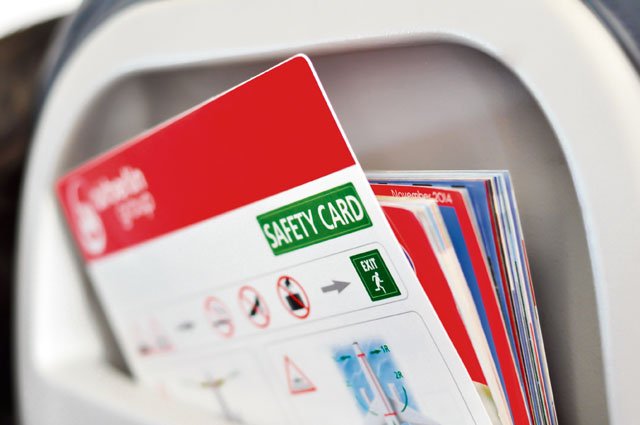
By the Federal Aviation Administration
Aviation safety isn’t just the Federal Aviation Administration, the pilot’s or the flight attendants’ job — it takes all of us. We all need to think about safety — even just for a minute.
Here are some tips to follow to keep you and your fellow travelers safe when you fly. Most importantly, pay attention to your flight and cabin crews. They are there to keep you as safe as possible.
You can make your flight even safer by following these guidelines:
- Pay attention to the flight attendant safety briefing at the beginning of your flight and read the safety briefing card.
- Buckle up. Keep you and your family safe by wearing a seat belt at all times while seated.
- Use an approved child safety seat or device if your child weighs less than 40 pounds.
- Prevent in-flight injuries by following your airline’s carry-on restrictions.
- Check your airline’s Portable Electronic Device (PED) policy.
What to know about Portable Electronic Devices on airplanes?
- Changes to PED policies vary by airline. Check with your airline to see if and when you can use your PED. Airlines may allow passengers to use handheld PEDs such as tablets, e-readers, and smartphones.
- Cell phones may not be used for voice communications or for cellular connections.
- Use electronic devices in airplane mode or with the cellular connection disabled. You may use the WiFi connection on your device if the plane has an installed WiFi system and the airline allows its use.
- Properly stow heavier devices like standard laptops under seats or in the overhead bins during takeoff and landing. These items may injure you or someone else in the event of turbulence or an accident.
- Put down electronic devices, books and newspapers and listen to the safety briefing.
- It only takes a few minutes to secure items according to the crew’s instructions during takeoff and landing.
- In some instances of low visibility — about one percent of flights — some landing systems may not be proved PED tolerant, so you may be asked to turn off your device.
- Always follow crew instructions and immediately turn off your device if asked.
Make safety your first priority.
